Out & About: Women played a role in the Mexican-American War
| Published: 07-15-2019 8:00 PM |
WOODSTOCK — The Mexican-American War of 1846-1848 is often overshadowed by the Civil War, which started fewer than 15 years later.
It’s also often confused with the Texas Revolution, which took place 10 years earlier and featured the famed Battle of the Alamo and the heroics of Davy Crockett, and the Spanish-American War of 1898, some 50 years later.
But the Mexican-American War — fought between the U.S. and Mexico over the annexation of Texas — was a pivotal point in United States history.
“It’s terribly important in terms of American expansion,” said John Belohlavek, an author, historian and University of South Florida professor who has studied the war, after which the United States gained parts of modern-day Arizona, New Mexico, Colorado, Utah and California. “We strip Mexico of half of its country.”
And if the war is overlooked, even more so are the women who played a role in it on both sides. From 7-8 p.m. next Monday, at the Woodstock History Center, Belohlavek will explain their roles in a talk titled “Women Prostitutes, Patriots, and Spies.” His book on the topic, Patriots, Prostitutes, and Spies: Women and the Mexican-American War was published in 2017.
American women both advocated for and opposed the war. Some showcased that enthusiasm through knitting for the troops and encouraging them to be brave in the fight. Others thought the war was “taking advantage of the Mexicans to extend the institution of slavery,” Belohlavek said, noting that the Seneca Falls Convention took place in 1848. “This is just the tipping point where women are into the reform causes.”
For the women in Mexico, it was a much different war.
“It’s really pretty hard to find a happy situation for these Mexican women,” Belohlavek said.
Article continues after...
Yesterday's Most Read Articles
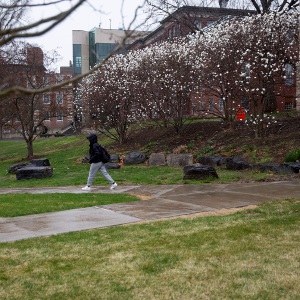 Zantop daughter: ‘I wish James' family the best and hope that they are able to heal’
Zantop daughter: ‘I wish James' family the best and hope that they are able to heal’
 James Parker granted parole for his role in Dartmouth professors’ stabbing deaths
James Parker granted parole for his role in Dartmouth professors’ stabbing deaths
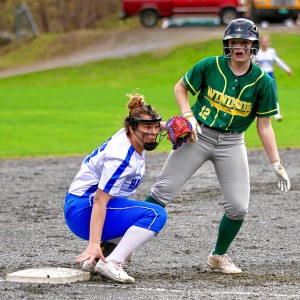 2024 Upper Valley high school softball guide
2024 Upper Valley high school softball guide
 Art Notes: After losing primary venues, JAG Productions persists
Art Notes: After losing primary venues, JAG Productions persists
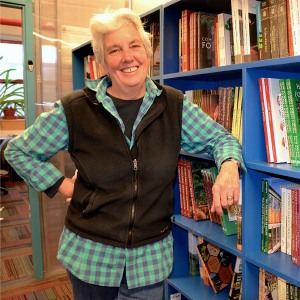 Chelsea Green to be sold to international publishing behemoth
Chelsea Green to be sold to international publishing behemoth
They served as “soldaderas,” who accompanied the Mexican army to cook food and do laundry. Some even took part in the fighting.
“They were the hardscrabble companions to their men,” said Belohlavek, who spends part of each summer in the Woodstock area. There were also women who were living simply in areas that the U.S. Army occupied “who were exposed to the best and the worst of American behaviors.”
There were other women who were able to take advantage of the turmoil to make a profit. One was Maria Gertrudis Barceló, a Mexican woman who owned a saloon in Santa Fe and was a master gambler who also spied for the Americans during the war.
“She’s got wealth and status,” Belohlavek said. “Apparently you could not beat her.”
Sarah Bowman was an American woman who owned an inn and brothel in Matamoros called the American House.
“She’s a force,” Belohlavek said. Bowman was referred to as “the heroine of Fort Brown,” because she kept serving meals despite intense fighting during that 1846 battle.
Like Barceló, Bowman turned a profit.
“The line was that the guys would be charged $2.50 for a dozen eggs ... they would complain bitterly, but if they were charged $2.50 for a night at the American (House) they would never complain,” Belohlavek said.
Editor’s note: The Woodstock History Center is located at 26 Elm St. For more information, call 802-457-1822 or visit woodstockhistorycenter.org. Liz Sauchelli can be reached at esauchelli@vnews.com or 603-727-3221.

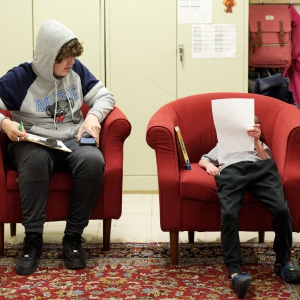 Some families find freedom with Newport microschool
Some families find freedom with Newport microschool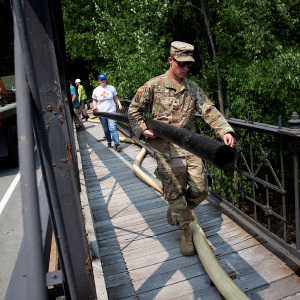 Woodstock Aqueduct Company seeks to double water rates
Woodstock Aqueduct Company seeks to double water rates
